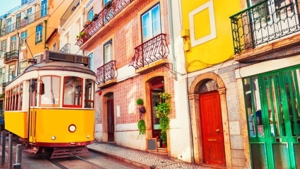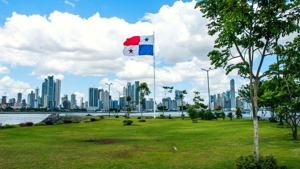Murcia, Spain
Murcia, Spain: Everything You Need To Know
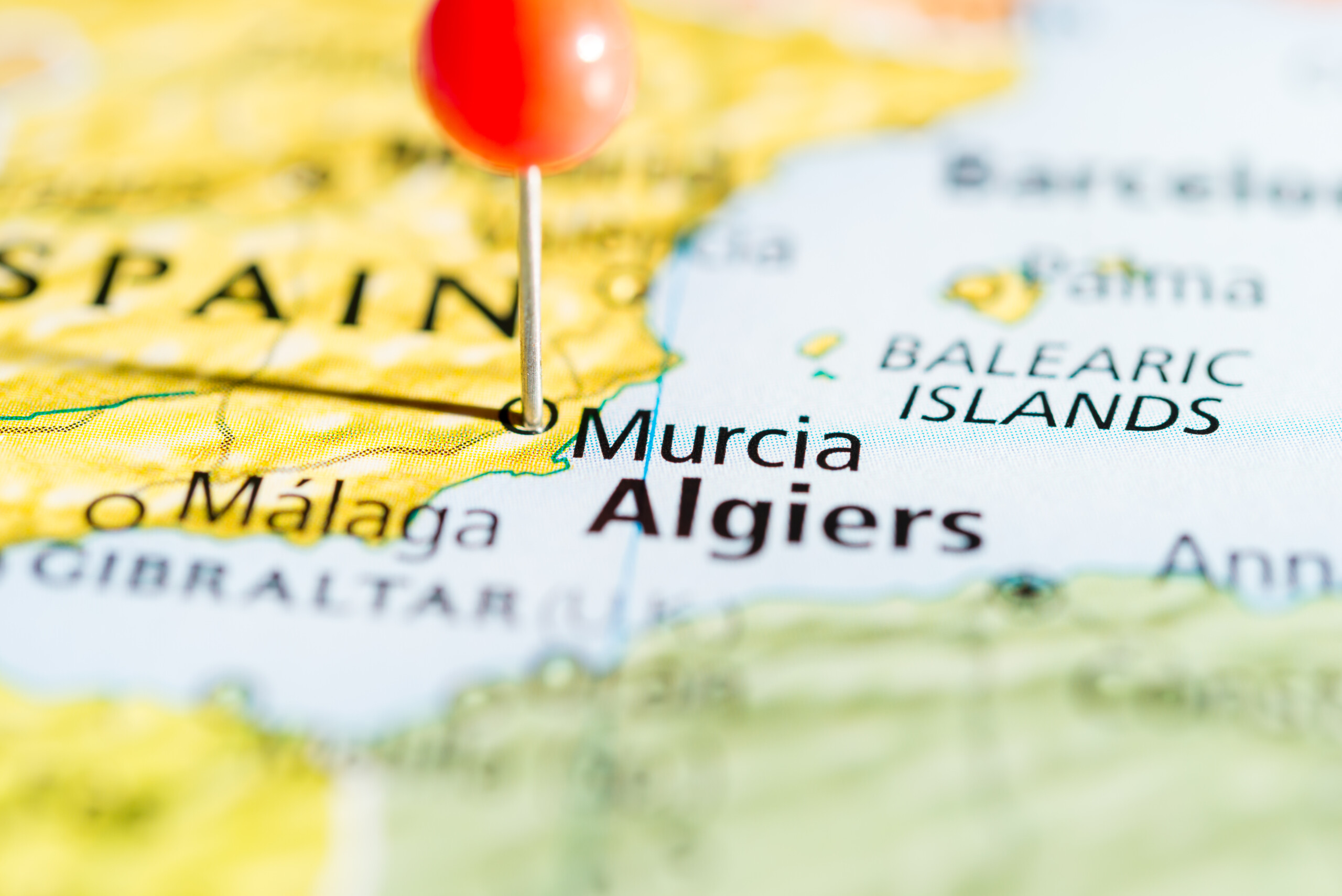
Murcia is a region located in southeastern Spain. It’s 1 of 17 autonomous communities that make up the country. The city of Murcia serves as the administrative, cultural, and economic center of the region.
The region of Murcia has fertile plains, rugged mountains, and a stunning coastline along the Mediterranean Sea.
Agriculture is an important economic component here, so much so that the region is known as “Huerta de Europa,” Orchard of Europe. Key agricultural products from here include fruits, vegetables, and flowers, great news for those who enjoy locally grown produce.
Murcia is a complete region with universities, a rich history, a vibrant culture scene, a delicious local cuisine, and natural parks. All this along with a lower cost of living, a Mediterranean climate, and gorgeous landscapes makes this an incredibly appealing place for expats looking to live in Spain.
Expat Community In Murcia
The expat community in Murcia is growing…
Expats from various countries decided on relocating here because of it’s lower cost of living compared to the rest of Europe.
The quality of life in Murcia, a warmer climate, a rich culture, high quality health care, are key factors for choosing to live abroad.
Expats who decide to relocate are retirees, but you’ll also run into some who relocated due to work opportunities and education.
Make sure to join expat groups on social media such as Murcia Expats to stay up to date with the events, social gatherings, volunteer opportunities, and more.
Getting in on the expat network is a fantastic way to get yourself set up in your new home. If you need a lawyer, a real estate agent, banking information, housing information, information on schools for your children, and more, your fellow expats will likely be able to point you in the right direction.
Start Your New Life Today, Overseas
Average Cost Of Living In Murcia, Spain
With the dollar at near-parity with the euro, this could be the best time in our lifetimes to be in Europe.
Where, specifically, should you be thinking about living or retiring on the Continent?
Spain could be your Old-World dream come true… especially if budget is a concern. You could live or retire well in this country on a budget of as little as US$1,855 per month.
The cost of living in Murcia is lower than in most other European countries. This is one of the reasons expats decide to relocate here.
Spain has no restriction on foreigners owning property.
Most importantly, Spain has long been one of the world’s most sought-after property destinations thanks to its great weather and friendly atmosphere.
Spain has an affordable cost of living. For example, a couple could live in Murcia on a monthly budget of about US$2,000.
Apartment Or House Rental Budget (For A Couple)
| Expense | Monthly Costs | Notes |
|---|---|---|
| Total | US$2,035 | |
| Rent | US$950 | Three-bedroom apartment in the city center. |
| Transportation | US$30 | US$1.45 per one-way ticket. US$30 for monthly pass. |
| Utilities | US$155 | Electricity, including heating and cooling, and water. |
| Cell Phone | US$20 | Depends on the cell phone plan you choose. |
| Internet | US$30 | |
| Entertainment | US$400 | Eating out twice a week at a local restaurant. Beers/drinks twice a week at a local pub. |
| Groceries | US$450 | Monthly grocery haul for a couple. |
Start Your New Life Today, Overseas
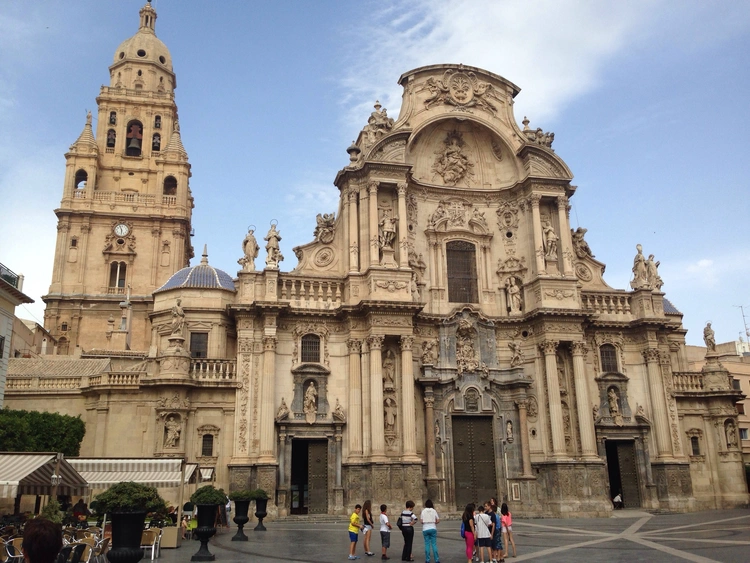
Things To Do In Murcia, Spain
A huge advantage of living in Spain is the chance to explore Portugal, France, and beyond. Whether by road, rail, or air, Spain’s infrastructure allows you to plan your European adventures easily, frequently, and affordably.
Murcia, Spain, offers its visitors and residents a wide variety of activities to enjoy. Let’s look at a few…
1. Murcia Cathedral
The Murcia Cathedral is known as the Cathedral of Santa Maria. This is one of the most historically significant landmarks in this region of Spain. Lovers of architecture around the world, this cathedral should be on your list.
Construction of this cathedral started in the 14th century. Its architectural style is primarily Gothic but also includes hints of Baroque and Renaissance. Its most distinctive figure is its bell tower, the tallest bell tower in all of Spain.
Within the cathedral complex, there’s a museum. Here you’ll find a large collection of religious artifacts and art including paintings and sculptures.
The Holy Chapel is a separate building. It is the burial place of several important figures.
Visitors are welcome here. However, this is an active church which holds masses, weddings, and special religious celebrations.
2. Real Casino de Murcia
The Real Casino de Murcia, considered an architectural masterpiece, is a historical building located in the center of Murcia, Spain.
Casino, as locals often refer to it, was built in the late 19th and early 20th century. It has a variety of architectural styles including Baroque, Renaissance, and Moorish elements. The interior of the Casino is characterized by its elaborate ceilings and exquisite artwork.
It’s central courtyard, known as Patio de las Sirenas, offers a serene ambience with a central fountain. The Real Casino de Murcia also has a library with an extensive collection of books.
Paintings, sculptures, and other art works housed here highlight the cultural richness of Murcia.
3. Murcia’s Spring Festival
The Spring Festival offers visitors and expats a chance to immerse themselves in the local culture. There are processions and celebrations, parties, fireworks, traditional music and dance, and floral offerings during this time.
It’s a deeply religious event. But it also represents local cultural traditions.
Murcia’s Spring Festival (Fiestas de Primavera) takes place during April and May.
4. Archaeological Museum of Murcia
The Archaeological Museum of Murcia is an important cultural institution in the region. It is dedicated to preserving and displaying the archaeological heritage of the entire region of Murcia. They also focus on education efforts.
Established over 150 years ago, making this one of the oldest archaeological museums in Spain. It is in Casa de la Enseñanza, a historical building.
The museum houses a large and varied collection of items from different time periods and civilizations. Here you will find items from prehistoric, Moorish, Roman, and medieval times.
5. Sanctuary of the Fuensanta
The Sanctuary of the Fuensanta is on a mountain range called Sierra de la Cresta. It is located to the east of Murcia.
Most importantly, it is a significant religious site. The sanctuary is dedicated to the Virgen de Fuensanta (Virgin of the Fuensanta). She is the patron saint of Murcia and is considered as the protector of the city of Murcia and its inhabitants.
This sanctuary dates to the 17th century when the original chapel was built. It features a mix of architectural styles including Baroque and Neoclassical.
It’s a popular destination for pilgrims who visit to pay their respects to the Virgen de Fuensanta. Similarly, the sanctuary hosts ceremonies and processions throughout the year.
The most important event here is the annual pilgrimage known as Día de la Fuensanta (Day of the Fuensanta) drawing large crowds of pilgrims from Murcia as well as surrounding areas. This celebration takes place on the first Sunday of September.
6. Water Sports
Murcia is a coastal city that enjoy a warm Mediterranean climate year-round which means there are opportunities to enjoy watersports.
Windsurfing, kitesurfing, sailing and boating, jet skiing, scuba diving and snorkeling, canoeing, and kayaking, stand-up paddleboarding (SUP), parasailing, canyoning, river trekking… There’s so much to do here.
Consider heading over to the Mar Menor, a large saltwater lagoon, if you’re interested in windsurfing, kitesurfing, jet skiing, or stand-up paddle boarding. It’s also a great place if you want to go sailing or boating. Mar Menor is shallow, and the water is calm.
La Manga is another great place for jet skiing. It’s also perfect to go parasailing.
If you enjoy canyoning and river trekking, then head over to Segura River and Sierra Espuña National Park.
You can enjoy scuba diving and snorkeling at Cabo de Palos and Islas Hormigas Marine Reserve. The marina wildlife and underwater landscapes here are breathtaking.
Start Your New Life Today, Overseas
Safety In Spain
Murcia, like most of Spain, is a safe place. However, petty theft and pickpocketing can happen anywhere in the world no matter how safe it claims to be.
Follow these safety tips in Murcia to reduce the risk of being mugged or losing important belongings.
· Avoid wandering around alone in poorly lit streets and alleyways at night.
· Lock your house before leaving.
· Make sure no valuables are in sight in your car and lock it well.
· Don’t wear flashy jewelry.
· Keep your bag, purse, wallet, and phone with you always.
· Don’t carry large amounts of cash.
· If you use public transportation, make sure to place your bag in front of you rather than on your back or behind you. Also, do not keep your wallet and phone in your back pockets.
· Stay up to date with local news.
Health Care In Murcia
Spain has a first-class infrastructure and one of theworld’s best health care systems…
Also, Spain’s health care ranks among the best in the world by the World Health Organization. Murcia’s health care system is both high quality and accessible.
Most importantly, when you’re an expat in Murcia, and you are registered and contribute to the Spanish social security system, you are eligible Spain’s universal health care coverage. Aside from this, Murcia has a public and private health care system.
The public health care system in Spain, known as the Sistema Nacional de Salud (SNS), provides free or low-cost medical services to both residents and expats. However, waiting time for appointments may be longer than at private health care facilities and there may be less English-speaking professionals on staff.
Expats usually prefer Spain’s private health care system. At private hospitals, medical centers, and clinics, your health concerns will be tended to faster than in public facilities. The staff in these facilities are also more likely to speak English.
We strongly suggest you purchase health care insurance. There are options which cover you internationally. If you seek medical care in a private hospital, clinic, or center, you will have to pay out of pocket. However, if you have private health insurance, you’ll likely only need to pay a co-payment.
Start Your New Life Today, Overseas
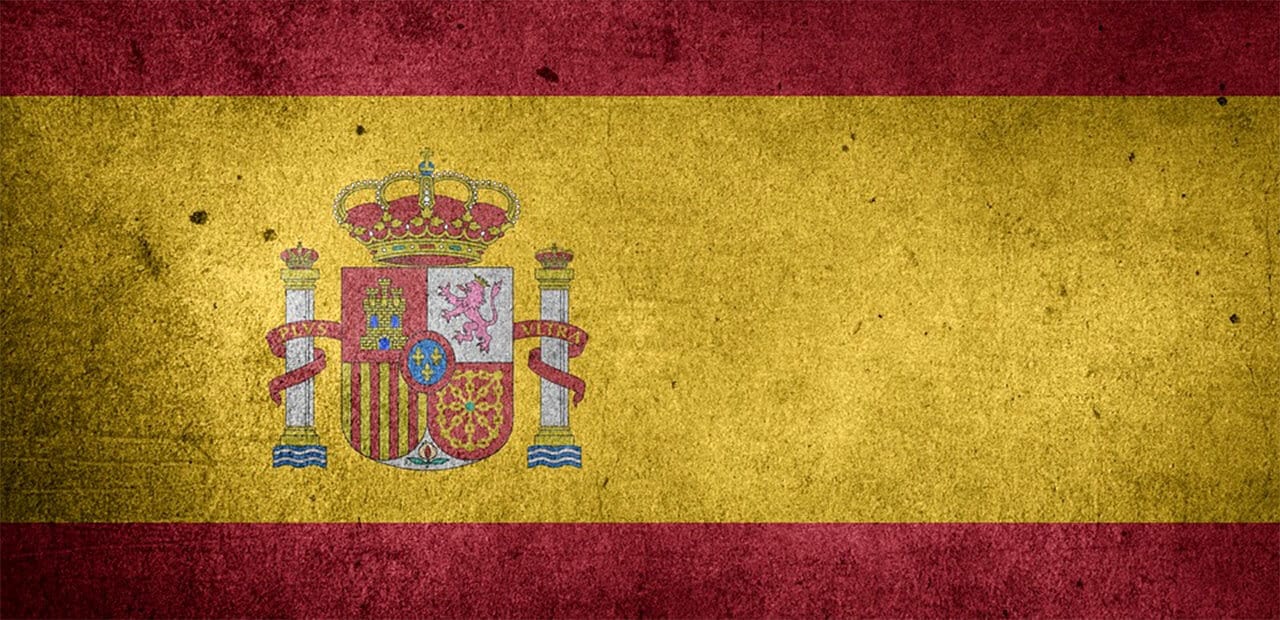
Visa And Residency For Spain
U.S. citizens can enter Spain for visits of up to 90 days visa-free, so it is feasible to own a property in Spain, visit for up to 183 days a year, and remain non-resident. Or you can seek legal residency.
However, if you wish to stay longer than 90 days, you need a “long-stay visa” in your passport before you leave the United States.
Like many countries in Europe, Spain grants residency to foreigners who can prove they can take care of themselves (that is, pay their own bills and not be a burden on the state).
Certainly, Spain ranks highly among expat workers and retirees from all over the globe. And for good reason. It offers all the romance of the Old World, holding tight to its traditional charms.
Spain offers several residency and visa options to choose from. Among your options are an investor visa and a digital nomad visa.
For instance, the Self Employment Visa is the option for individuals who want to open a business in Spain. Firstly, the visa is valid for one year initially, but you can apply to renew it for an additional four years.
Read more:Things To Know Before You Move To Spain

Climate In Murcia, Spain
Murcia has a warm Mediterranean climate. It’s one of the many reasons for choosing this place to move abroad.
Summer runs from June to August. Temperatures range from 86°F to 95°F. Don’t be surprised if during July and August temperatures go above 95°F. Days are long and sunny during this season.
Autumn runs from September to November. This season is generally warm and pleasant here. Temperatures range from 77°F to 86°F during September and will gradually decrease as November approaches. You may experience occasional rainfall during October and November.
Winter in Murcia is from December to February. Day temperatures will typically average between 59°F to 68°F. Nights might get a bit cooler. Murcia receives more rainfall during these months.
Spring in Murcia runs from March to May. Temperatures range from 68°F to 77°F. The temperatures will increase when it gets close to May. During this season, flowers blossom all over the region.
All in all, the climate in Murcia is pleasant. This is an ideal place if you’re a nature lover and enjoy taking part in outdoor activities year-round.
Murcia, Spain - FAQs
Is Murcia, Spain, worth visiting?
Murcia, Spain, is worth visiting when you want to spend time in a place with warmer weather, affordable cost of living, tranquil ambience, and that’s rich in history and culture.
What Is Murcia, Spain, Known For?
People know Murcia for its agriculture. This region is known as “Huerta de Europa,” Europe’s Orchard.
Is Murcia In Spain Expensive?
Murcia is among the more affordable destinations in Europe. A couple could live comfortably here on a monthly budget of about US$2,000.
How Far Is Murcia From The Beach?
The closest beach to Murcia is about 40 to 50 minutes away by car. Beaches in Murcia include Playa de Poniente, Percheles, Playa de las Palmeras, Cala Cortina, La Azohía, Playa de Paraíso. Plus, the climate is pleasant. It’s one of the main reasons retirees consider moving to Murcia.
More Resources From Spain
PLACES
ECONOMY
OTHER RESOURCES
Sign up for FREE and learn how to live the good life on a modest budget, find bargain property, and more. Plus, check out our free report on the 10 BEST PLACES TO RETIRE.
RETIRE OVERSEAS AND LIVE LIKE ROYALTY



